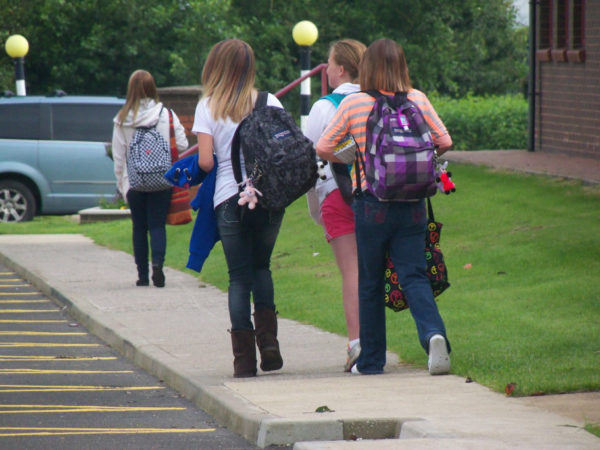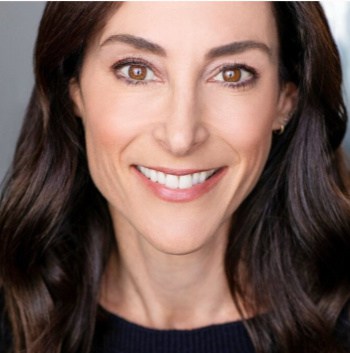Feels like were are living in a profoundly paradoxical moment: at the start of summer, the most exciting prospect on the horizon is the hope of getting back to school. Of course, we know whom to thank for that: coronavirus.
School appreciation is one of the brightest silver linings of living through a pandemic. Yes, remote learning has come a long way over the past few months, largely out of necessity. But it feels safe to say that now more than ever we all appreciate the importance of on-campus school life – not just the education that occurs in a classroom, but also the socialization, emotional support structures, physical skill-building, and for many, access to food and wifi that some cannot get at home. This is why educators, parents, and kids alike are clamoring to get back in the fall.

Unfortunately, this likely won’t happen in a “normal” way and, again, we know whom to thank for that: coronavirus.
Until there are widely available vaccines and therapies to treat Covid-19, schools will need to be nimble, existing at times online and at other moments in person but highly modified. And unlike what happened this past spring, when the entire country retreated into a shutdown mode, schools will likely operate differently depending upon their location and the rates of local coronavirus infection. These are some of the things you can expect to see when school resumes in the fall.
What school will look like this fall
- Your school calendar will be completely different. Some schools will move from a semester system to a trimester or quarter system. Some will begin earlier in the fall – frankly it might feel more like mid-summer – in an effort to get classes going while viral numbers are expected to be low (coronavirus, like most other viruses, shouldn’t spread as easily in warm temperatures…though with a brand new virus circulating, all bets are off). Some will limit holidays between the start of school and Thanksgiving break, and then give kids a big chunk of time off through the holiday season. Colleges and boarding schools in particular may offer classes on weekends in order to fit more of the curriculum into a shorter time period and to discourage travel off campus.
- Your class schedule will be quite different, too. Some schools will rearrange the way classes are offered throughout the day, likely extending the length of each class and reducing the total number of class rotations to reduce the number of times kids need to move classrooms. And many schools, especially colleges with large survey courses, will only teach certain classes remotely to avoid large groups from gathering in small spaces. There are high schools and colleges toying with the idea of keeping all classes online, with the goal of reducing spread among students and protecting teachers who due to age are more vulnerable to COVID than their students.
- Your space will look different. Most schools will do their best to keep people separated by six feet of distance, since coronavirus generally doesn’t travel that far except with the help of a giant sneeze or forceful exhalation. There’s some data showing that three feet of distancing in conjunction with mask wearing may be almost as safe, so look for more on that as the summer unfolds because schools that can space kids by three feet can get twice as many kids back into a classroom – ideally even the entire class.
- You should be masking up. Wearing a mask is the single most effective thing you can do – short of staying home – to protect other people around you. From what, you ask? From coronavirus you may not know you have. The majority of kids, tweens, and teens have no symptoms even when they are infected with coronavirus – wearing a mask means they will keep that virus to themselves and protect higher risk individuals from catching it.
- You’ll see sinks and hand sanitizers where you never saw them before. That’s because washing hands or doing a thorough rub with an alcohol-based sanitizer is important if you want to keep yourself infection-free. Coronavirus enters the body either via respiratory droplets – those are tiny droplets of water plus virus that people cough, sneeze or just breathe out – or by touching a surface that has virus on it and then touching their eyes, nose, or mouth.
- Social events will be radically different…or non-existent. Ditto sports, theater, and assemblies or large gatherings, too. This is kind of a no-brainer, given that at large events, people are almost always crowded together, a perfect petrie dish for viral spread. Contact sports allow the virus to move from one athlete to another. Everyone is hoping that these restrictions get lifted soon, but at least for the foreseeable future, don’t expect to roll into school and experience all of the social gatherings you are used to.
Different schools will have different rules
Perhaps the most confusing part of all of this is that different schools will make different rules, even schools on the same block! But that’s because this is all so new, no one really knows the best approach. Everyone is trying to figure out how to keep life safe while keeping it somewhat familiar, something not easily doable in a pandemic.
So, here’s the most important piece of advice: No matter the rules, do the right thing. Students and parents alike, keep your distance from others, wear a mask, and wash your hands regularly, even if no one is mandating it. Be smart about how you behave because it will take a global effort to shift the course of this disease.
Of course, we all know that person who thinks the rules don’t apply to them – they’ve always been that way, and it’s not right. But especially in pandemic, it’s also not safe or fair to others. Think about your social responsibility, here, and you’ll feel empowered to make smarter decisions.
We all hope that school rules will relax in the near future. But if you’re a planner, plan for a year that doesn’t look like any school year in the past. Consider it an adventure, and while you’re at it, keep a journal because you’ll want to share this story down the road.

Source: https://grownandflown.com/dr-cara-natterson-high-school-fall/
The content is owned by Cara Natterson. Visit site here for other valuable articles.


No comments:
Post a Comment